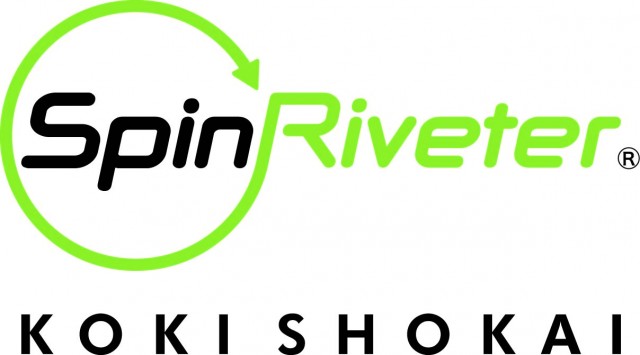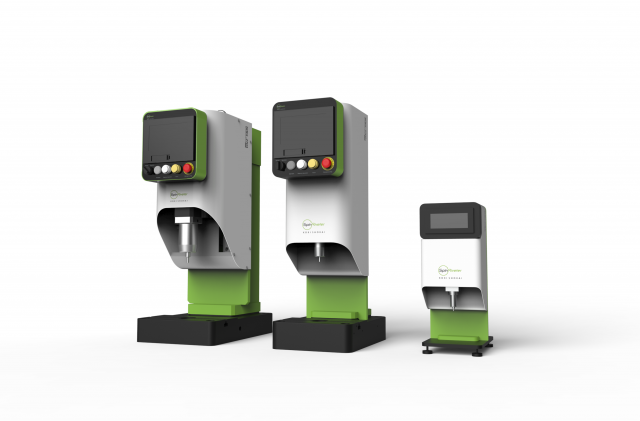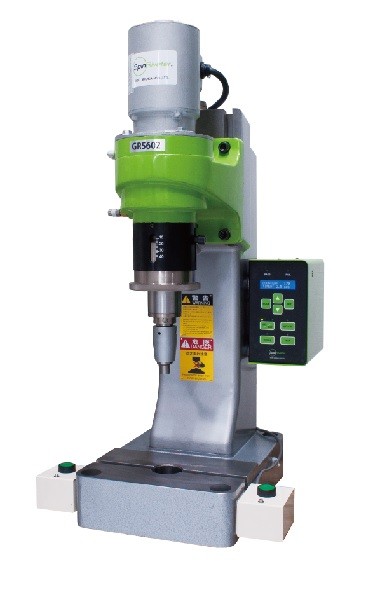KOKI SHOKAI CO., LTD.
- General machinery, industrial machinery
- Automated devices, labor-saving devices, factory-automation devices
- Devices, components and parts related to electrical and electronic devices
- Metal molding and heat treatment
Throughout our 80-year history, we have been devoted to manufacturing riveting machines in Japan.
Not only conventional air-pressure-type machines but also electric-type machines are expected to be a primary technology in the future. Clients can choose the best machine according to their production requirements.
Based in Ota, the "craftsmen's town," we engage in fast, high-quality manufacturing, dedicated machine development, and customization of punches and roller jigs for rivets that are very small or in complex shapes, which other companies refuse to accept.
We are now looking for local agents to support our clients.



Specialized Products, Technologies and Services
ABOUT SPIN RIVETING
The rivets are deformed and joined together by applying pressure while rotating.
Since the rivet is deformed by weak pressure, the rivet shaft is less likely to become thicker and is used to join parts such as hinges that require mobility.
Compared to press riveting, which rivets only by applying pressure, the rivets are more suitable for delicate products and work that requires precision because they can be significantly deformed with an extremely low amount of force.
Spin Riveting Machines and Press Riveting Machines
Press riveting applies a strong force from one direction to deform the rivet.
Because of the strong pressure applied, loud vibrations and sounds are generated.
Also, the rivets have a thicker shaft and lose their play.
This is good if you want it to stay firmly in place, but not if you want mobility.
On the other hand, in spin riveting, the spin head, which is tilted several degrees from the rivet axis, applies pressure as it rotates, allowing the rivet to be deformed with less force than in the press type.
Compared to press riveting, the rivets are subjected to less than 1/7th of the force and there is less shock, vibration and pressure applied to the product and rivets themselves, so unnecessary deformation is less likely to occur and precision work can be performed.
The rivet shaft can also be deformed by pressure to make it thicker, producing excellent results with a wide range of protection.
Rivet Testing and Prototypes from Kamata!
In riveting, small differences in the type of material and settings of the riveting machine can have a significant impact on the results.
Without testing, it is not possible to know whether processing can be carried out correctly, so we recommend testing first.
We have the actual riveting machines available at our lab for you to try out right then and there.
We also have experienced riveting craftsmen on hand to assist you.
Current Status of Overseas Business
| On-site production | |
|---|---|
| Sales bases (incl. dealerships) | China, Thailand, Singapore, Indonesia, Malaysia, Mexico, Taiwan, and India |
| Export | China, Southeast Asia, North America, and Europe |
| Import | |
| Outsourcing production /processing | |
| Technology partnerships | |
| R&D bases | |
| Other |
Key Business Partners
• Automotive parts manufacturer
• Electronic parts manufacturer
• Medical equipment manufacturer
• Accessories manufacturer
Future Target Countries and Regions
China, Thailand, Indonesia, Mexico, Germany, and France
Overseas Business Prospects
Company Information
| Representative | RYUICHI TAKAHARA |
|---|---|
| Address | 1-24-6 Kamata, Ota-ku, Tokyo 144-0052 |
| URL | https://kokiriveting.com |
| Established in | 1937 |
| Capital | 10 million yen |
| Employees | 12 |
| International Certification (e.g. ISO) |
Contact
| Name | Ryuichi Takahara |
|---|---|
| Position | President and CEO |
| Tel | +81-3-3732-5461 |
| Fax | +81-3-3732-5464 |